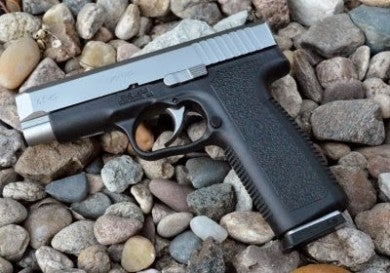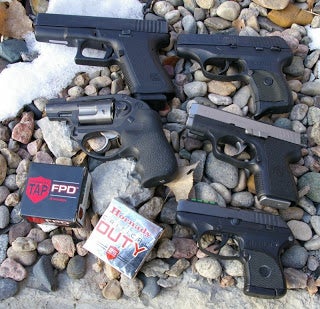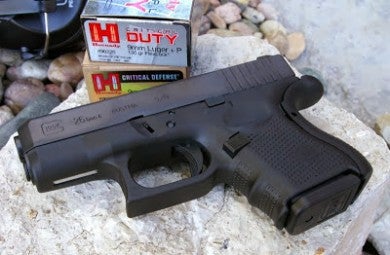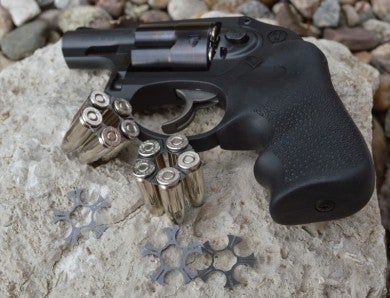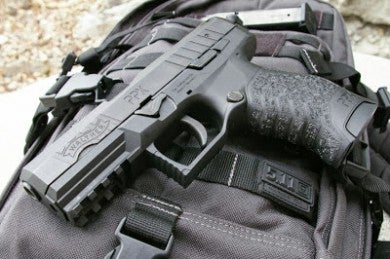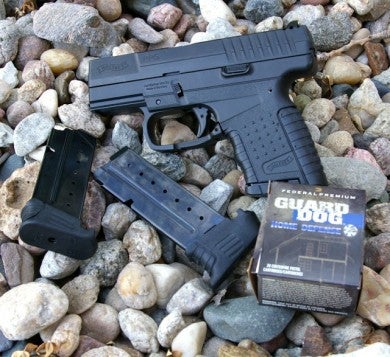The State of the Polymer Pistol
Major Pandemic 03.16.15

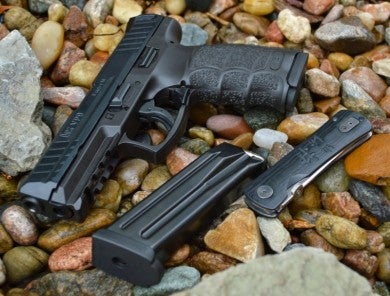
Almost thirty years ago, Glock entered the market with a polymer pistol design that challenged everything we thought we knew about modern pistol design. Even way before that industry shaking event, H&K offered their VP70 back in the 1970’s, which was a very high capacity polymer framed design.
I remember back in the 1970s and 1980s, it seemed every gun writer did their best to find fault with these “futuristic” designs, but the designs worked and proved themselves as or more durable than metal framed pistols and far more reliable. In efforts to prove (or disprove) the reliability, extreme 10,000+ round tests were created, which drove these new polymer designs to a round count far beyond what any typical gun owner would shoot in several lifetimes.
Polymer is here to stay and is now finding its way into mainstream firearm designs such as the Advanced Combat Rifle and even revolvers such as Ruger’s LCR. Even polymer AR15 lowers have proven themselves to handle abuse that would destroy typical aluminum lower receivers. From a pistol perspective, polymer frames have become the standard and not the exception. The once ugly, loathed, and odd, Glock now rules the pistol market from the solid gold throne of “I told you so”.
Glocks never have been the most ergonomic, pretty, or wonderfully fit pistols on the market, but owners could count on them going bang every single time even if frozen, coated in mud, or even after being shot with a shotgun. Glock safety, durability, and reliability is legendary, and they continue to deliver those standards over and over again with exceptional service. It took little time for people to start customizing Glocks to improve comfort and ergonomics. Competitors took notice of these improvements and began offering pistols that included these upgrades right out of the box. More and more polymer framed pistol competitors jumped onto the scene.
Oddly enough, almost thirty years later, a trip to any gun shop will validate that metal framed pistols are now the minority and polymer framed pistols now rule the market. In fact, outside of the 1911 market, Sig Sauer is one of the few manufacturers who concentrate almost solely on metal framed pistols.
The variety of polymer framed pistols from manufactures is stunning, spanning from internal mechanical differences, caliber, capacity, single/double stack magazines, colors, ergonomics, ambidextrous functionality, quality, sights, and other miscellaneous features like light rails. The options are dizzying. Though Glock still subscribes to its small, medium, and large frames for 9mm, they were on the bleeding edge of offering .40S&W, 10MM, .357 Sig, .45 ACP, and .380 ACP caliber options. Glock’s 10mm models still remain one of the very few factory 10MM pistols available from any manufacturer.
Most believe that all the polymer pistols are all the same and therefore are all striker fired, but that could not be further from the truth. Many of the striker fired pistols do feature an action similar to the original Glock design, but due to patent protection, there are obviously differences, which each manufacturer claims to be better in some way.
Functionality is similar, but not the same. Some polymer framed pistols look like striker fired pistols, but are new hybrids such as the Walther PPX, which is hammer fired, but mechanically operates like a striker fired pistol.
Kahr, for example, actually has one of the simplest striker fired designs on the market with very few parts in their pistols.
H&K has two very unique designs in the double action-single action P30 hammer fired pistol and the new VP9 striker fired design. Crack open one of the VP9’s, and you see one very unique striker fired design, which is beefy to the max. To the untrained eye, the internals of most pistols such as a Walther PPQ look mighty similar to the internals of a Glock.
And on the American side, Smith & Wesson made a bold leap into the market with a set of very ergonomic pistol designs based on their own take on striker firing, but unfortunately had some early reliability issues that hurt them from a sales perspective long term.
The venerable Springfield Armory also got into the polymer pistol game in 2001 with their wildly popular XD series.
Completely new polymer framed pistol companies like Diamondback have emerged and have been reported to offer inexpensive reliability. Kahr’s new CM-series offers shooters a reliable, well made, sub-$300 gun option, as does Walther with the PPX line. Even the old and very inexpensive Hi Point pistols have held up admirably and have been reported to deliver exceptional reliability. Keltec’s designs have always been unique, and they have delivered not only a huge line of rifles in polymer, but pistols as well.
Meanwhile it seemed Glock was still beating its own unique solid gold drum by offering marginally upgraded versions of its Gen 2 pistols all while still maintaining magazine compatibility from its Gen 1 to Gen 4 designs, which made people very happy. A giant Glock upgrade for example was changing the grip texture, adding finger grooves, or offering swappable back straps. I think the key to Glock’s success is that they had a great, timeless design that needed very little updating to stay current.
The sale of sub-micro compact .380 ACP DAPP’s (Dinky-A** Polymer Pistols) soared as more and more states began offering concealed carry permits and as more and more women entered the gun market. Keltec’s original innovative little .380 design was closely imitated by Ruger, S&W, and others. Ruger, for example, could not keep enough LCP .380 pistols on the shelves, and today it still remains an enormously popular Ruger model. Same goes for S&W’s Bodyguard pistol. These tiny little DAPP’s were loud barking, uncomfortably shooting handfuls if you actually had to shoot them.
Glock of course again went in a different direction with a Walther PPK sized Glock 42 chambered in .380 ACP. The compact single stack size was just big enough to be super controllable, easy to handle, and soft recoiling, but still small enough to conceal easily on the female body. It has been one of the hottest selling pistols of 2014 and wildly popular with both CCW (concealed carry) female and male shooters.
2012 and 2013 were also the years for many sub-compact single stack 9mm pistols from a wide range of manufacturers. Some of my favorites were the Kahr CM9, Walther PPS, and Ruger LC9. These tiny little 9mm pistols delivered the promise of 9mm power in a compact .380 format, which rivaled the size and power of subby revolvers, but with more firepower.
For me, some of the most interesting polymer pistol designs have been around delivering superior shooter comfort, ergonomics, and trigger feel. The ergonomics and comfort of the H&K and Walther pistols are just amazing. The triggers on these two brands are among the best in the industry. Heated arguments could be had whether the trigger on the H&K VP90 or Walther PPQ is better. In either case, these pistols represent an enormous improvement to what people expect from a striker fired pistol.
Actually, in many ways, both the VP90 and PPQ offer all the upgrades and modifications you wanted on your Glock, including an overall more contoured pistol, more comfortable concealed carry, improved ergonomics and ambidextrous controls, improved accuracy, customizable grip width and backstraps for the most comfortable grips in the industry, a fair amount more style, and of course the sublime triggers. I believe these pistols both offer a fundamental shift in what we have come to expect from polymer pistols.
The point is that we as gun people have moved over the last 2-3 decades from shunning polymer to becoming polymer gun people. Looking forward, how much of our gun parts might become generally accepted as being made of something other than metal? If we look where we have come from, expecting a completely non-metallic gun in the next ten years is not that much of a leap of the imagination.
